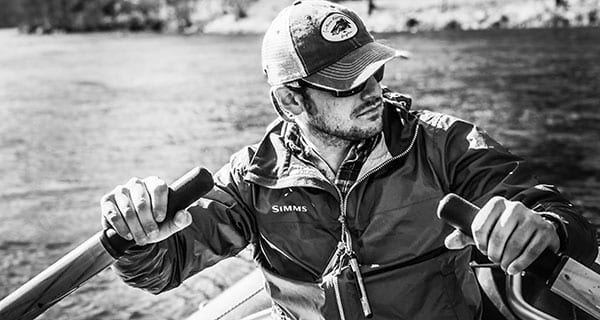A landing net is an often overlooked, but yet critical, part of every angler’s arsenal from beginner to expert. It is my essential tool that I never leave home without, whether I am fishing for myself or running guide trips. As a guide and professional angler, one of the biggest mistakes I see from novices is that they either neglect to use a net entirely, or they use the wrong kind of net for the job. Since many new anglers have joined the community over the last year, I thought I would share my advice on what type of landing nets work best for anglers fishing the river systems of the Southern Appalachians.
Firstly, I need to stress the importance of carrying a landing net in the first place, before talking about specific types. Landing nets are an essential part of every angler’s arsenal. A good landing net with the appropriate handle length, basket material, depth, and opening width will ensure that fish will have the best chance of survival upon being released. A good landing net will also help keep fish in the water for longer periods of time without having to be removed, which I think is essential, especially when it comes to trout fishing. The less you have to physically handle a fish, the better its chance of survival. It also ensures that fish can be kept from banging into rocks or having to drag them on dry land, which can cause internal bleeding and remove a fish’s slime layer that helps protect it from bacteria in the water which could lead to infection.
The landing net you’ll need personally mainly depends on two different factors: the size of the fish you’re after, and the size of the waterway you’ll be fishing. This mainly determines the handle length and basket depth that will be appropriate for the scenario. For large rivers that have larger than average fish (say for example, smallmouth bass or large stocked trout) then I’m going to primarily use a net with a handle at a minimum three feet long with a basket that is at least a foot deep, with a wide opening to allow for bigger fish to be able to sit inside the net without having their spines bent into a U shape. This puts the least amount of stress on the fish as possible and also ensures larger fish can be kept underwater for longer periods of time. My guide net, that I use for situations such as this, has a five foot long handle with a basket depth of two feet, with a wide enough opening to ensure I can land big fish as quickly as possible.
For smaller water (let’s say wild trout streams that are 20 feet or less in width, with average fish sizes being smaller) then you can get away with a smaller handle size. However, I don’t skimp on the depth of the basket or the net opening. I should also mention material type here. Do not use a net without a rubber or coated lining! Rubber is a more gentle material on the fish’s skin, and it will also keep hooks from getting tangled as easily, compared to traditional rope material used for nets. My preference for nets on wild trout streams also would include net webbing itself to have very small diameter holes. I can’t tell you how many small trout I have seen that have been harmed from people letting them slip out of the holes in larger nets onto rocks. Frabill has a variety of options that fit the bill very well for the small stream trout angler.
For musky, a net is essential to ensure a clean release. The Frabill stow-away series of nets, in my experience, provides the right type of handle length, storage capacity, width, and basket depth to ensure I can land these large predator’s and have enough room to leave them in the water, off the side of the boat, while retrieving hooks and reviving fish. Having a net that is too shallow or doesn’t allow for the musky to sit completely in the water is one of the biggest detriments to this species’ survival from a catch and release perspective.
One final note I will mention is that you do not have to spend a ton of money for a quality net. Finding one that follows the parameters listed above, however, will help you, as an angler, better practice catch and release so our fisheries in Western North Carolina can be productive for years to come.
Ethan Hollifield is a member of a conservation organization called 2% For Conservation and a guide for Southern Appalachian Anglers. He is a Professional Fly Fishing, Smallmouth Bass, & Musky Guide. (828)-467-7862
